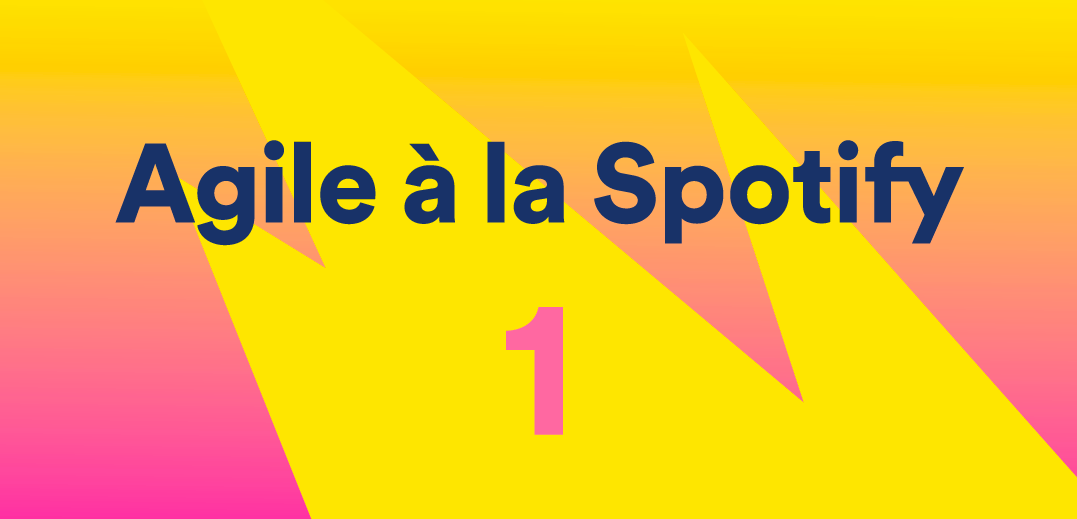Agile à la Spotify
At Spotify we have our own “Agile à la Spotify” manifesto to create alignment and direction for our improvement work. This blog post describes the background for creating the document, what it is and how we are using it.
A little over a year ago my colleague Karin Björkén woke up early one morning and started writing “an agile manifesto for Spotify”. After observing and talking to different teams in different locations, it had become clear that we did not have an aligned view on what agile means to us as a company. We prided ourselves on our agile culture, but at the end of the day we weren’t really sure that we understood that to mean the same thing. Other agile coaches had similar observations so we loved the idea and wanted to work together on it.
We felt that the original Agile Manifesto wasn’t concrete enough, didn’t really paint an inspiring picture, and was not specific enough to our current context. We wanted something that could be used for guidance in our daily work, whether you’re an engineer or a manager, and that could be used in onboarding of new employees. We also wanted it to resolve some of the specific confusion over agile we had identified at the start.
With all this in mind we felt it had to be short and to the point, but still concrete enough for a n00b to understand what it meant in practice. After a couple of workshops and a few rounds of feedback, we came up with one short version (“the skinny”) and a kind of appendix on what it means for the Spotify culture. To avoid confusion we decided to call it “Agile à la Spotify”.
“Agile à la Spotify” is only one way of expressing our agile values and our culture. We also have an organizational design with the autonomous squad as a core concept. We do quarterly and bi-annual surveys with each squad to learn how we can support them. Some of the early suggestions for what to include in “Agile à la Spotify” were removed because they were already expressed in this survey. More on that in another blog post.
Agile à la Spotify (the skinny)
Continuous improvement
At Spotify, part of my work is to look for ways to continuously improve, both personally, and in the wider organisation.
Iterative development
Spotify believes in short learning cycles, so that we can validate our assumptions as quickly as possible.
Simplicity
Scaling what we do is key to Spotify’s success. Simplicity should be your guidance during scaling. This is as true for our technical solutions, as for our methods of working and organising the organisation.
Trust
At Spotify we trust our people and teams to make informed decisions about the way they work and what they work on.
Servant leadership
At Spotify managers are focused on coaching, mentorship, and solving impediments rather than telling people what to do.
What does this mean for the Spotify culture?
Continuous improvement
We can all contribute by:
- Taking part in regular squad and project retrospectives
- Being willing to experiment and trying new things
- Promoting a culture of no blame and no fear
- Seeing each change as an opportunity for improvement
Iterative development
We will:
- Identify the smallest, simplest step that will help us learn
- Demo and release often
- Use A/B testing and other ways of gaining data-driven insight to verify our assumptions
- Hypothesize, measure, analyze, learn, adjust
Simplicity
Remember that:
- Simplicity allows for transparency, reuse and easy knowledge transfer
- Removing complexity takes time and needs to be done iteratively
- It’s important to have the hard discussions on how to do things simply
- We favor direct communication and avoid unnecessary layers in communication
- We don’t over-engineer and we don’t cut corners
- We strive to avoid single points of failure
Trust
People are trusted to:
- Support and make decisions to make Spotify a success
- Politely question each other to improve Spotify
- Figure out the best way to work with each other (which process to use)
- Find their own solutions to complex problems
- Identify and attack problems themselves, rather than seeing them as someone else’s responsibility
Servant leadership
We would like to see that:
- Decisions are transparent
- Managers encourage collaboration to solve problems rather than dictating a solution
- Managers help to address impediments that the squad/chapter cannot solve themselves
- You have regular one-on-one coaching and mentorship time with your manager
- People development happens alongside Spotify’s success.
Impact
Agile à la Spotify has since been discussed in our tribes and tribe management groups, endorsed by our CTO (who was also active in developing it), used in onboarding, and has been discussed by new agile coaches and other colleagues. I don’t have the data to claim that it has made an enormous impact, but I believe the work of developing the document created alignment and an important communication tool for many culture ambassadors within Spotify. I believe that this, together with numerous other efforts, has helped bring Spotify closer to the vision outlined in Agile à la Spotify. And I hope we will continue to use it to this purpose.
Feedback
We would love to hear your thoughts on this. Maybe you have done something similar in your workplace or are thinking about doing it? Please share your thoughts and comments below.
Tags: agile







